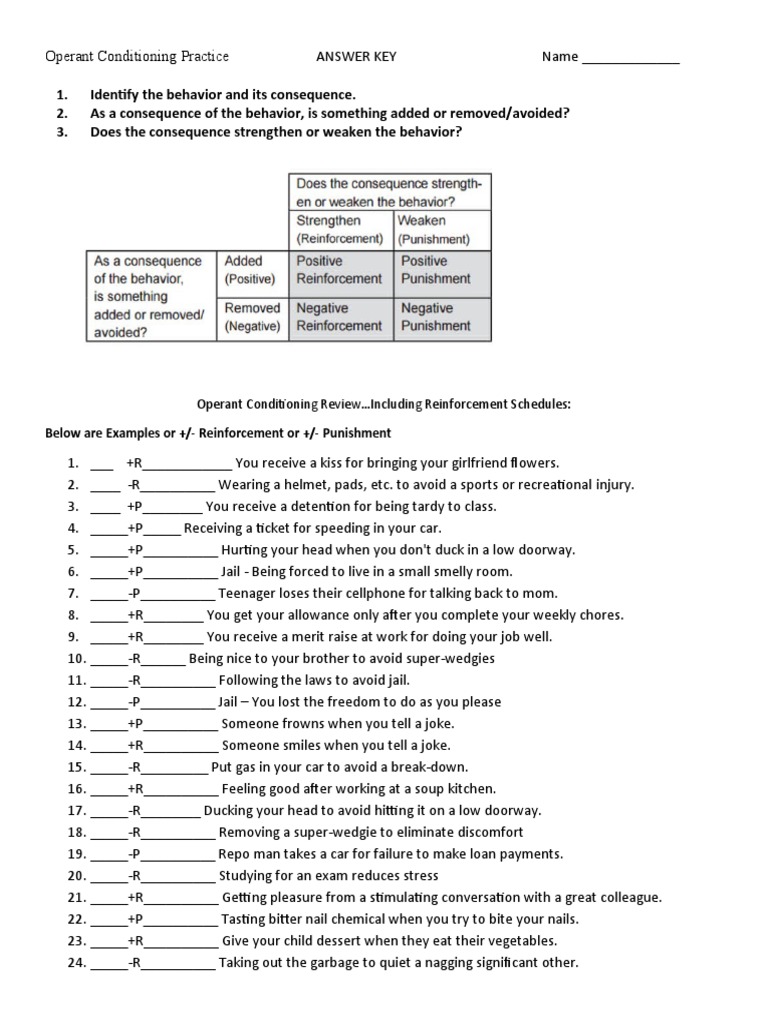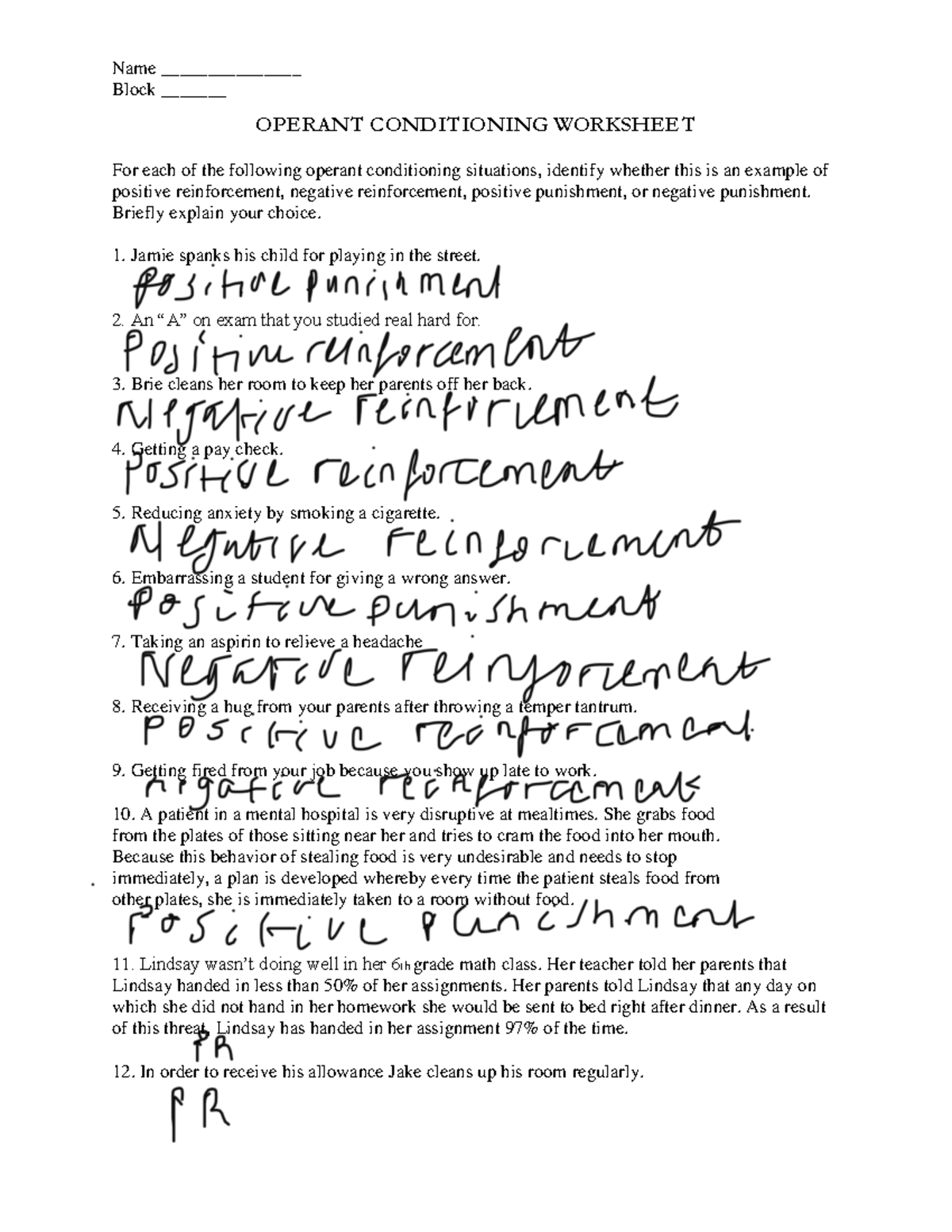Okay, so today I really got down to business with that operant conditioning stuff, specifically that worksheet on punishment and all those schedules of reinforcement. It’s one of those things you think you get, but then you try to actually pin down the answers, and well, it makes you think, that’s for sure.
Figuring Out Punishment First
I decided to tackle the punishment section first. Seemed like the easier entry point, you know? My process was pretty straightforward. I’d read the scenario they gave, and then I’d ask myself: is something being added, or is something being taken away? That was my first big question. If something was added to make a behavior stop, boom, positive punishment. If something was taken away to make a behavior stop, then it had to be negative punishment.

I actually drew little plus and minus signs next to some questions for a bit. Like, “kid talks back, gets extra chores.” Okay, chores are added, so that’s a plus. The goal is to decrease talking back. So, positive punishment it is. Then another one, “teenager stays out past curfew, loses phone privileges.” Phone is taken away, that’s a minus. Goal is to decrease staying out late. So, negative punishment. I went through each one like that, making sure I wasn’t just guessing.
Then Came the Reinforcement Schedules… Oh Boy
Next up were the schedules of reinforcement. Honestly, this is where I usually have to slow down and really concentrate. Fixed Ratio, Variable Ratio, Fixed Interval, Variable Interval. They all sound so similar at first glance!
My strategy here was to break it down into two parts for each scenario:
- First, is the reinforcement based on the number of responses (ratio) or the amount of time that has passed (interval)?
- Second, is that number or amount of time predictable (fixed) or unpredictable (variable)?
So, I’d read a scenario, maybe something like “a worker gets paid for every 100 envelopes they stuff.” Okay, payment depends on the number of envelopes (responses), and it’s a set number (100). So, that clicked as Fixed Ratio. Easy enough.
But then you get something like, “checking your phone for messages.” This one made me pause. You don’t get a message every set number of checks (so not fixed ratio). You don’t get a message every set amount of time (so not fixed interval). You check, check, check, and eventually you get a message, but you don’t know when. That felt like a Variable Ratio to me because the reinforcement (message) comes after an unpredictable number of checks (responses). It’s the not knowing that keeps you checking!
The interval ones, like “a supervisor checking on a worker at 9 am, 11 am, and 3 pm,” that’s clearly about time, and it’s set times, so Fixed Interval. But if it was “a supervisor checks in randomly a few times a day,” that’d be Variable Interval because the time is unpredictable.

I went through all of them, sometimes talking it out loud to myself, which probably looked a bit funny. I’d sketch out little timelines or counts for some of the trickier ones. It’s all about pinpointing what triggers the reward and whether that trigger is consistent or all over the place.
By the end of it, my brain felt like it had a good workout. But it’s satisfying when you finally get through it all and feel like you’ve really got a handle on how these concepts play out in actual situations. Definitely a good practice session today!